Hey Guys,
On our way to the White River in Arkansas, I have to keep the Trout population in balance if not they will take over all the rivers of the world, we stopped in Mexia ( Mahaya) for the "Save Old Ft. Parker Match". This took place on Oct. 15 Thur 18. It is a good size CAS match with 165 shooters and is located about 100 miles SW of Dallas. All the proceeds from the match along with donations from some VERY generous Cowboys go to keep the Ft. in repair and open to the public. It is NOT state funded.
This is a very history rich site to shoot at when you think what took place in 1830s.More on that later
I did win 1st place in Frontiersman and 2nd in Plainsman with the 45-70 Trapdoor. Hard to beat those H&R Handy Rifles with a Trapdoor, came real close
A little history of the Parker family and Quanah last of the Comanche war chiefs. Quanah went on to become very succesful in the white man world. Don't want to make this any longer than it already is. Read about him very interesting guy.
I'm sure that you are aware that this is an exact reconstruction of the Ft. built by the Parkers and five other familys in 1830. The Ft was attacted by 450-500 Comanche while most of the men were out working in the fields.
The Indians left when the armed men came running back to the fort. It was to late for most in the Ft.. After the attack all the remaning whites left for Palistine for safty about 60 miles away to the East. They were afraid there would be another attack.
The John Wayne movie The Searchers was based on the Cynthia Parker story.
Anyway a great match. Hope you enjoy the pictures of the Ft. The pictures don't do it justice
Wyandot
THE HISTORY
For longer than any Comanche could remember, the summer had been a time of eager anticipation. It was the time when preparations would begin for the great communal bison hunts—when whole villages would pack their tipis, ride out from the sheltering canyons of the Caprock, and find the great beasts that sustained the Comanche way of life.
But not this time.
On June 2, 1875, the Quahadi chief Quanah Parker led some 400 of the war-weary Comanche people into Fort Sill, Indian Territory. This time, they carried only a few possessions on their trek. This time, they would give up their weapons and their remaining ponies. It was their last act as The People they had been.
Their time was finished. Now they, and their way, would surrender to the dictates of the whites. Now they would hunt the bison only with permission, but even that time, too, would soon be gone.
Quanah's life story has become the stuff of Texas lore and legend. It begins in 1836 with the abduction of Cynthia Ann Parker, the young white girl who would one day become a Comanche wife and mother, who would later be recaptured by Texas Rangers, and who would die hopeless, unable either to see her Indian sons or to again become "white." It ends in 1911 with Quanah Parker—wealthy rancher, successful businessman, deputy sheriff—buried in full Comanche regalia.
Cynthia Ann would be reburied next to Quanah, mother and son rejoined at last after more than 50 years. But as its final irony, this essentially Texas story ends in an Oklahoma cemetery. In the end, Texas would not be Indian territory, not even for Quanah Parker.
The mythic dimensions of Quanah's story obscure the hard reality of the war along the Texas frontier. It was a conflict waged brutally and relentlessly, with "civilians" on both sides targeted as readily as soldiers and warriors, no quarter expected and none given. The pattern was already taking form by the mid-1830s. The attack on the Parker family compound left five white men dead, several women brutalized and left for dead, two other young women and three children carried away, among them Cynthia Ann, not yet a teenager.
The attack traumatized the Anglos, and galvanized them as well. Mirabeau B. Lamar, second president of the Republic of Texas, declared the policy of his administration in 1839. "The white man and the red man cannot dwell in harmony together," Lamar said. "Nature forbids it." His solution was "to push a rigorous war against them; pursuing them to their hiding places without mitigation or compassion, until they shall be made to feel that flight from our borders without hope of return, is preferable to the scourges of war."
Lamar was the architect of the first Texas attempt to accomplish what the government of the United States called "removal," the deportation of Indian tribes to places beyond the reach of white settlers. As pursued by the United States, the policy assumed there could be such a thing as a permanent Indian frontier—a line beyond which the various "removed" tribes would be able to carry on their lives free from white encroachment.
The United States had removed some 50,000 Indians from lands in the east to unorganized territory west of the Mississippi River. This opened approximately 100 million acres of eastern land to white settlement. To enforce the removal and, in theory, to protect the Indians in their new lands, a series of military posts was laid out on a roughly north-to-south line from a point on the upper Mississippi in present Minnesota to points near the Red River in present southeastern Oklahoma.
Unlike the U.S. government, however, Texas had no lands it was willing to set aside for the Indians. In Lamar's thinking, they would simply be driven beyond the Red River, where they would become the problem and responsibility of the United States.
To this end, John Henry Moore took a company of about 60 settlers from the vicinity of LaGrange and in January, 1839, rode up the Colorado River past its confluence with the Llano to look for Comanches. Already a veteran of more than 10 years of Texas frontier warfare, Moore included in his force the Lipan chief Castro and a group of his warriors, acting as scouts.
Moore led a dismounted attack into a surprised Comanche camp near the San Saba River, where his men killed a number of warriors in their teepees, and scattered the rest. But the Comanches regrouped, stole the attackers' horses, and escaped. The Lipans departed in disgust, leaving Moore and his men to a dangerous retreat down the Colorado on foot.
Similar encounters occurred later in the year. One, an expedition to the Little River, resulted in the deaths of Captain John Bird, four other rangers, and an estimated 25 to 35 Indians. Although these expeditions served mostly to keep the frontier in a state of turmoil, they contributed to the southern Comanche bands requesting negotiations with the whites. The site for the talks was San Antonio, and the resulting debacle would assure that Comanches and Anglo-Texans would never live together in peace.
The whites had demanded that the Comanches bring in their white captives—believed to number about 200—as a sign of good faith in the peace talks. The Comanches expected to barter for the return of each captive, one at a time. This was unacceptable to the whites, who became infuriated by the physical condition of the one white captive who was brought in, a 16-year-old girl.
When white soldiers attempted to arrest the Comanche negotiators, a fight erupted inside the government building where the talks were being held, then spilled out into the street. Of the 65 or so Comanche men, women, and children caught in the melee, not one escaped. Twelve chiefs were killed. Six whites, including the county sheriff and a visiting judge, also were killed. About 30 of the Comanche women and children survived and were taken prisoner.
One Comanche woman was sent to the Indian camp outside San Antonio to deliver the demands: Bring in all white captives within 12 days, or all the Comanche hostages would die.
The Comanche reaction was outrage at the whites' treachery. To the Comanche, such negotiations were protected, not to be violated. They tortured and killed most of the 13 captives in their camp, then returned to the prairies without those of their own people still held in San Antonio. Although those hostages ultimately escaped or were exchanged by the whites, the "Council House Fight" would burn in the Comanche memory. From that point forward, the history of Comanche-white relations in Texas would be mostly a cyclical pattern of raid and retaliation.
The Linnville raid in August, 1840, was unprecedented in Anglo-Texan experience. Buffalo Hump, an important chief of the southern Comanche bands after the Council House Fight, led a force estimated as numbering between 600 and 1,000, including families of the warriors. The Comanches left some 15 white settlers and black slaves dead in Victoria en route to Linnville, on the Gulf coast. There they ransacked the town and killed three whites and two blacks. Most of the residents who survived did so by taking to the water in boats.
The Indians turned northwest toward their home range, driving a herd of 2,000 to 3,000 stolen horses by the time they reached the Plum Creek prairie southeast of Austin. There they met a force of Texas militia, rangers, civilian volunteers, and Tonkawa scouts under chief Placido. In the running fight that followed, some 80 Comanche warriors were killed in the space of about 15 miles. One white man died. The Tonkawas received citations for bravery.
Although the audacity of the raid had cost the Comanches dearly, they were not through paying. The following month, Moore again led a force up the Colorado River, this time well beyond the San Saba. With some 90 white men and 12 Lipans, he again struck a Comanche camp at dawn, this time on horseback. The Comanches lost about 125 dead. Moore's report indicated that the number included many shot down as they tried to run, women and children among them.
Such events would recur many times in the coming decades.
When Texas joined the Union, nearly 10 years had passed since Cynthia Ann Parker had been taken from her family by Indian raiders. White settlement had moved north and west, out of the woodlands and onto the prairies. But nothing about the frontier experience had changed. Nowhere else on the Great Plains were red and white-occupied lands in such proximity. Nowhere was the conflict between these two cultures more brutal. And nowhere would it last longer.
THE OUTSIDE FROM BLOCKHOUSE TO BLOCKHOUSE
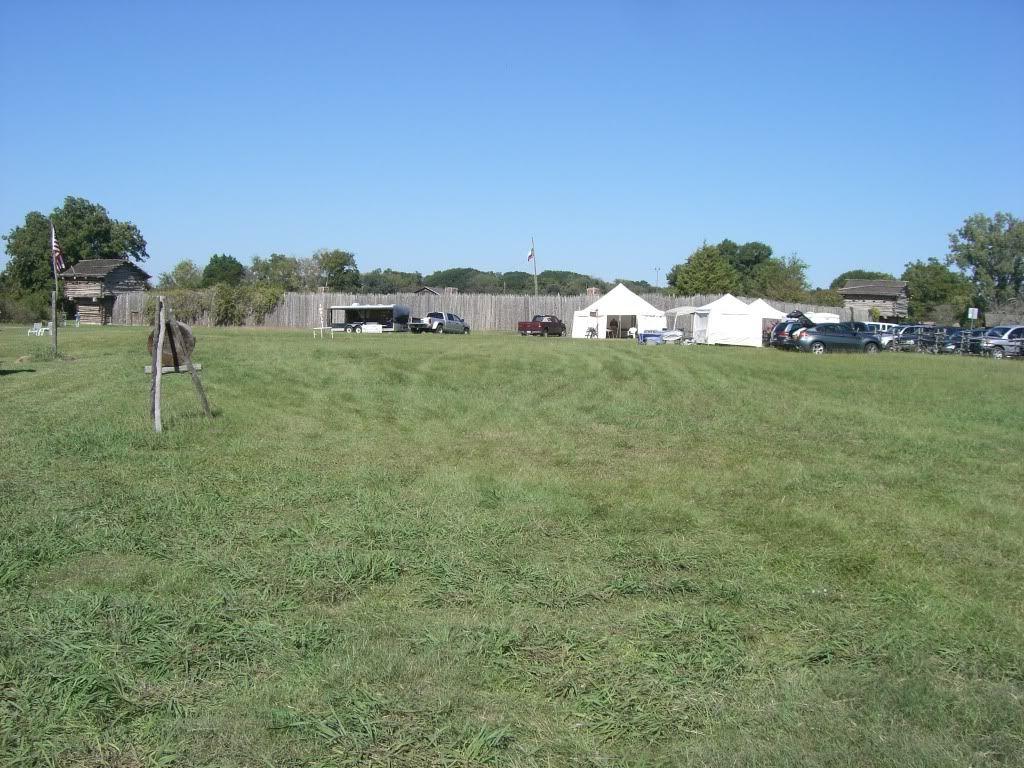
Some of the CAS stages

A cabin inside the FT.
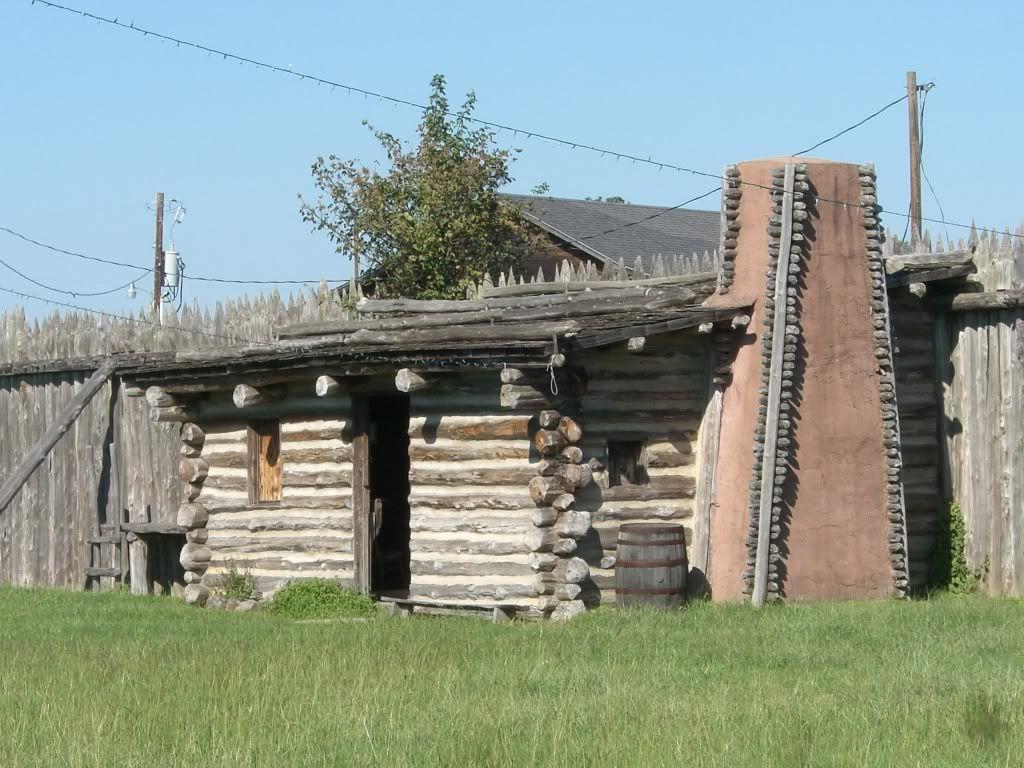
Blacksmith area inside the corral

The corral and block house
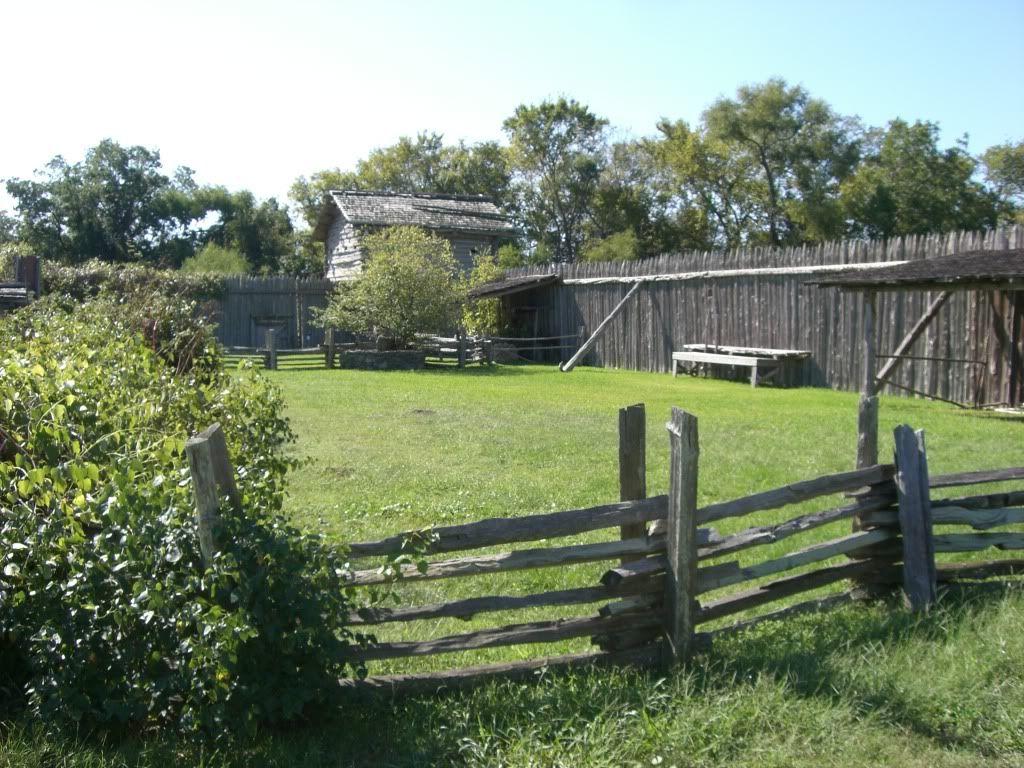
Notice the pegs and shooting ports

The block house. All the long range matches are shot from here. Except this year. Mr Skunk had others ideas. Where is Contender when you need him?????????? :roll:
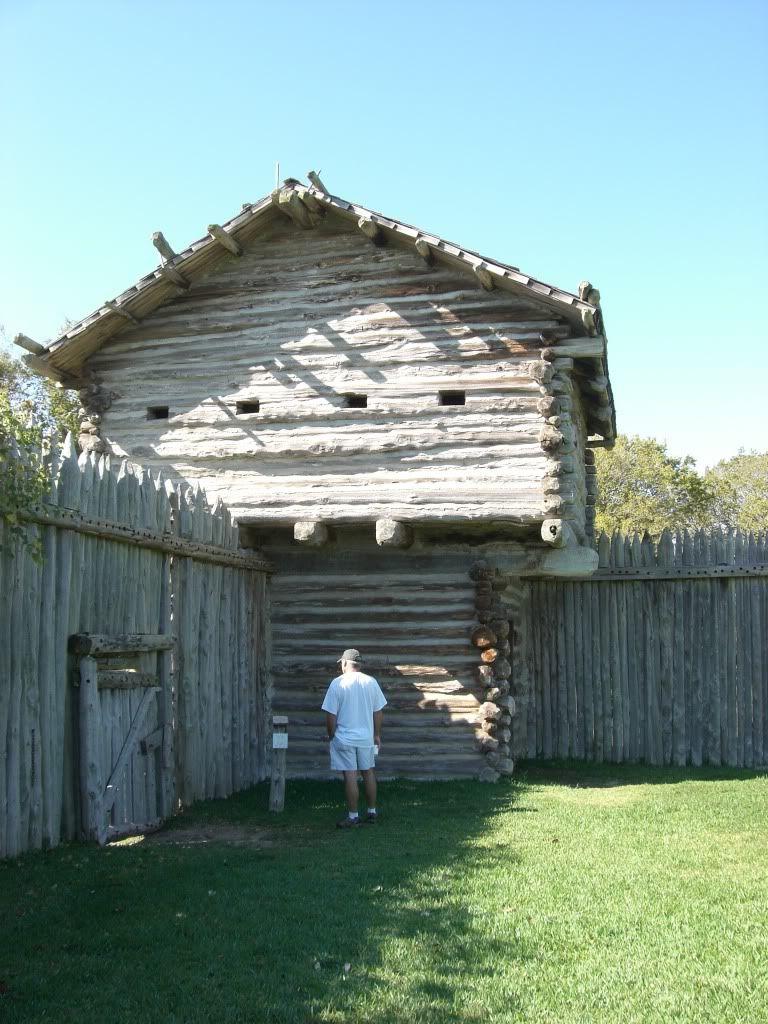
More of the corral
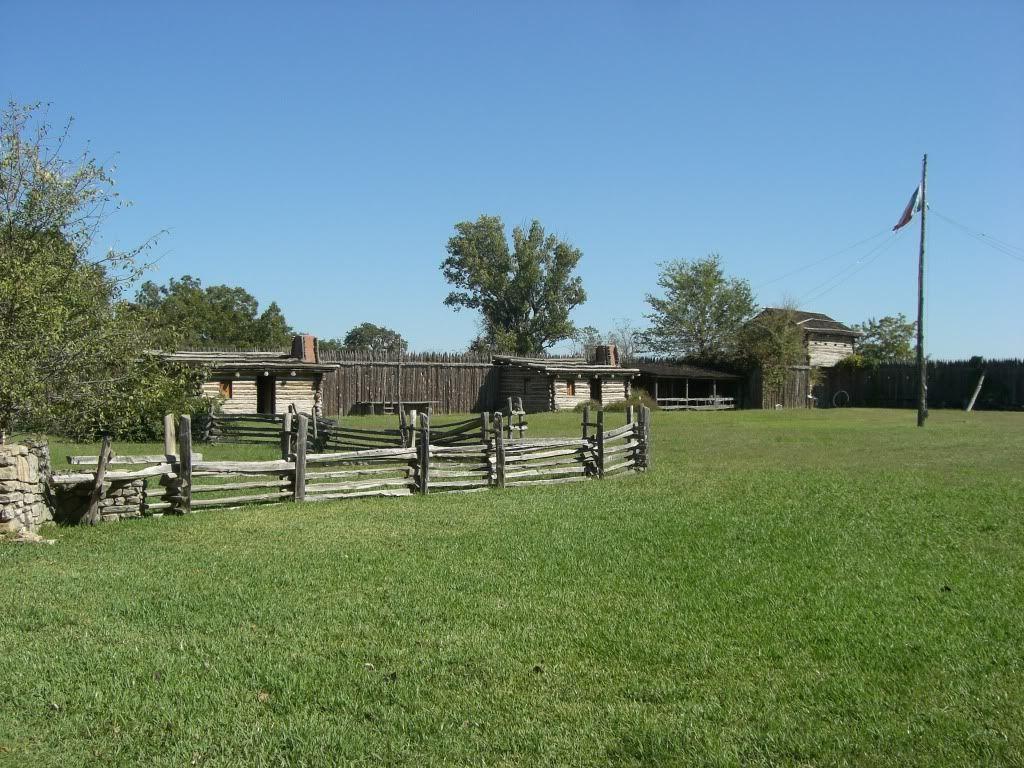
Making smoke left handed

Now right handed.
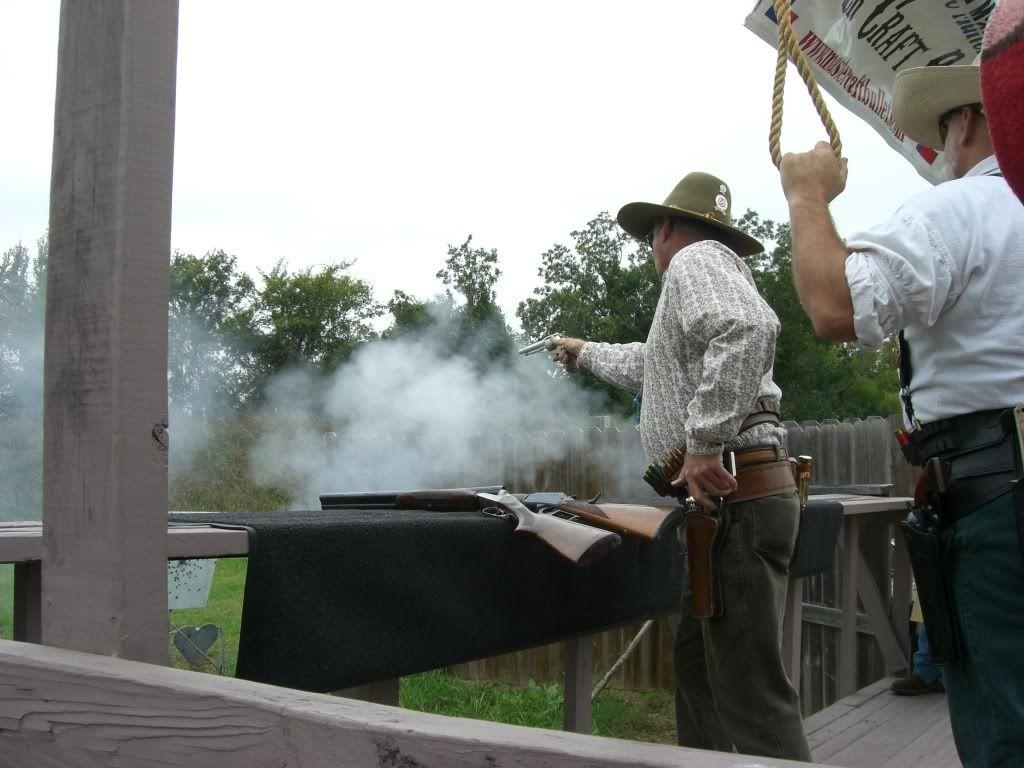
Rifle smoke
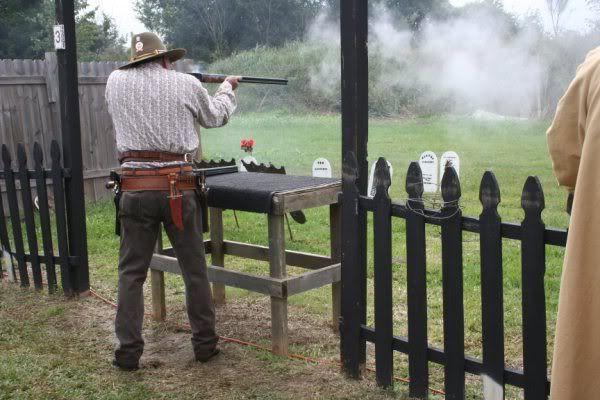
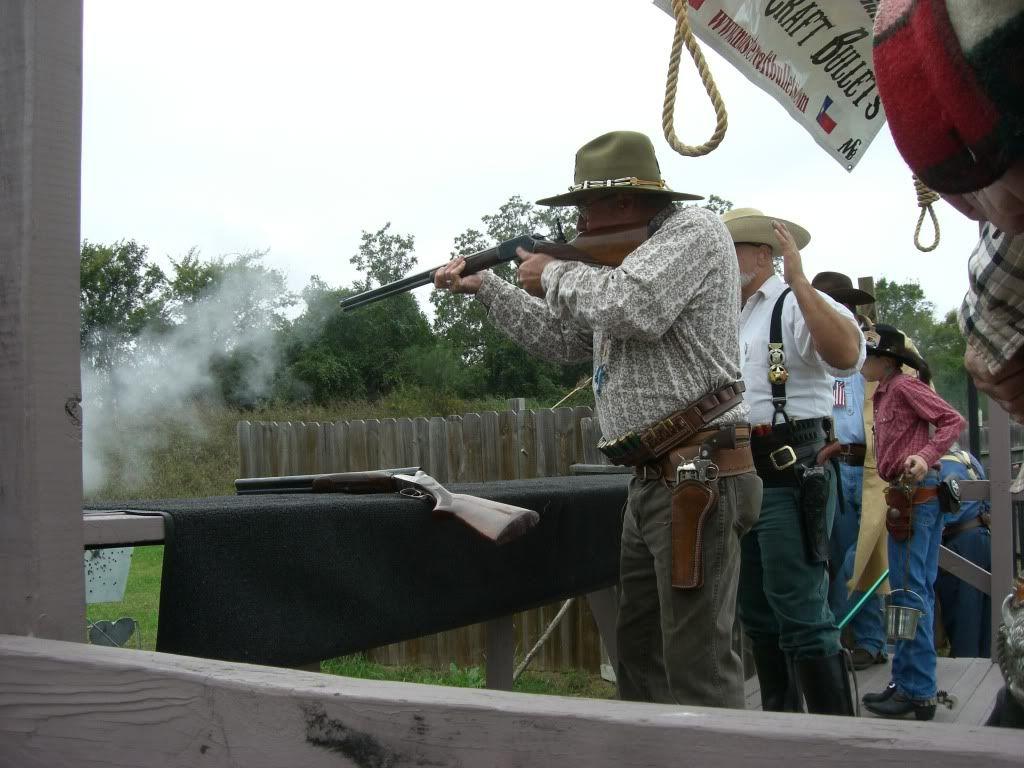
Shotgun

Where did the targets go


On our way to the White River in Arkansas, I have to keep the Trout population in balance if not they will take over all the rivers of the world, we stopped in Mexia ( Mahaya) for the "Save Old Ft. Parker Match". This took place on Oct. 15 Thur 18. It is a good size CAS match with 165 shooters and is located about 100 miles SW of Dallas. All the proceeds from the match along with donations from some VERY generous Cowboys go to keep the Ft. in repair and open to the public. It is NOT state funded.
This is a very history rich site to shoot at when you think what took place in 1830s.More on that later
I did win 1st place in Frontiersman and 2nd in Plainsman with the 45-70 Trapdoor. Hard to beat those H&R Handy Rifles with a Trapdoor, came real close
A little history of the Parker family and Quanah last of the Comanche war chiefs. Quanah went on to become very succesful in the white man world. Don't want to make this any longer than it already is. Read about him very interesting guy.
I'm sure that you are aware that this is an exact reconstruction of the Ft. built by the Parkers and five other familys in 1830. The Ft was attacted by 450-500 Comanche while most of the men were out working in the fields.
The Indians left when the armed men came running back to the fort. It was to late for most in the Ft.. After the attack all the remaning whites left for Palistine for safty about 60 miles away to the East. They were afraid there would be another attack.
The John Wayne movie The Searchers was based on the Cynthia Parker story.
Anyway a great match. Hope you enjoy the pictures of the Ft. The pictures don't do it justice
Wyandot
THE HISTORY
For longer than any Comanche could remember, the summer had been a time of eager anticipation. It was the time when preparations would begin for the great communal bison hunts—when whole villages would pack their tipis, ride out from the sheltering canyons of the Caprock, and find the great beasts that sustained the Comanche way of life.
But not this time.
On June 2, 1875, the Quahadi chief Quanah Parker led some 400 of the war-weary Comanche people into Fort Sill, Indian Territory. This time, they carried only a few possessions on their trek. This time, they would give up their weapons and their remaining ponies. It was their last act as The People they had been.
Their time was finished. Now they, and their way, would surrender to the dictates of the whites. Now they would hunt the bison only with permission, but even that time, too, would soon be gone.
Quanah's life story has become the stuff of Texas lore and legend. It begins in 1836 with the abduction of Cynthia Ann Parker, the young white girl who would one day become a Comanche wife and mother, who would later be recaptured by Texas Rangers, and who would die hopeless, unable either to see her Indian sons or to again become "white." It ends in 1911 with Quanah Parker—wealthy rancher, successful businessman, deputy sheriff—buried in full Comanche regalia.
Cynthia Ann would be reburied next to Quanah, mother and son rejoined at last after more than 50 years. But as its final irony, this essentially Texas story ends in an Oklahoma cemetery. In the end, Texas would not be Indian territory, not even for Quanah Parker.
The mythic dimensions of Quanah's story obscure the hard reality of the war along the Texas frontier. It was a conflict waged brutally and relentlessly, with "civilians" on both sides targeted as readily as soldiers and warriors, no quarter expected and none given. The pattern was already taking form by the mid-1830s. The attack on the Parker family compound left five white men dead, several women brutalized and left for dead, two other young women and three children carried away, among them Cynthia Ann, not yet a teenager.
The attack traumatized the Anglos, and galvanized them as well. Mirabeau B. Lamar, second president of the Republic of Texas, declared the policy of his administration in 1839. "The white man and the red man cannot dwell in harmony together," Lamar said. "Nature forbids it." His solution was "to push a rigorous war against them; pursuing them to their hiding places without mitigation or compassion, until they shall be made to feel that flight from our borders without hope of return, is preferable to the scourges of war."
Lamar was the architect of the first Texas attempt to accomplish what the government of the United States called "removal," the deportation of Indian tribes to places beyond the reach of white settlers. As pursued by the United States, the policy assumed there could be such a thing as a permanent Indian frontier—a line beyond which the various "removed" tribes would be able to carry on their lives free from white encroachment.
The United States had removed some 50,000 Indians from lands in the east to unorganized territory west of the Mississippi River. This opened approximately 100 million acres of eastern land to white settlement. To enforce the removal and, in theory, to protect the Indians in their new lands, a series of military posts was laid out on a roughly north-to-south line from a point on the upper Mississippi in present Minnesota to points near the Red River in present southeastern Oklahoma.
Unlike the U.S. government, however, Texas had no lands it was willing to set aside for the Indians. In Lamar's thinking, they would simply be driven beyond the Red River, where they would become the problem and responsibility of the United States.
To this end, John Henry Moore took a company of about 60 settlers from the vicinity of LaGrange and in January, 1839, rode up the Colorado River past its confluence with the Llano to look for Comanches. Already a veteran of more than 10 years of Texas frontier warfare, Moore included in his force the Lipan chief Castro and a group of his warriors, acting as scouts.
Moore led a dismounted attack into a surprised Comanche camp near the San Saba River, where his men killed a number of warriors in their teepees, and scattered the rest. But the Comanches regrouped, stole the attackers' horses, and escaped. The Lipans departed in disgust, leaving Moore and his men to a dangerous retreat down the Colorado on foot.
Similar encounters occurred later in the year. One, an expedition to the Little River, resulted in the deaths of Captain John Bird, four other rangers, and an estimated 25 to 35 Indians. Although these expeditions served mostly to keep the frontier in a state of turmoil, they contributed to the southern Comanche bands requesting negotiations with the whites. The site for the talks was San Antonio, and the resulting debacle would assure that Comanches and Anglo-Texans would never live together in peace.
The whites had demanded that the Comanches bring in their white captives—believed to number about 200—as a sign of good faith in the peace talks. The Comanches expected to barter for the return of each captive, one at a time. This was unacceptable to the whites, who became infuriated by the physical condition of the one white captive who was brought in, a 16-year-old girl.
When white soldiers attempted to arrest the Comanche negotiators, a fight erupted inside the government building where the talks were being held, then spilled out into the street. Of the 65 or so Comanche men, women, and children caught in the melee, not one escaped. Twelve chiefs were killed. Six whites, including the county sheriff and a visiting judge, also were killed. About 30 of the Comanche women and children survived and were taken prisoner.
One Comanche woman was sent to the Indian camp outside San Antonio to deliver the demands: Bring in all white captives within 12 days, or all the Comanche hostages would die.
The Comanche reaction was outrage at the whites' treachery. To the Comanche, such negotiations were protected, not to be violated. They tortured and killed most of the 13 captives in their camp, then returned to the prairies without those of their own people still held in San Antonio. Although those hostages ultimately escaped or were exchanged by the whites, the "Council House Fight" would burn in the Comanche memory. From that point forward, the history of Comanche-white relations in Texas would be mostly a cyclical pattern of raid and retaliation.
The Linnville raid in August, 1840, was unprecedented in Anglo-Texan experience. Buffalo Hump, an important chief of the southern Comanche bands after the Council House Fight, led a force estimated as numbering between 600 and 1,000, including families of the warriors. The Comanches left some 15 white settlers and black slaves dead in Victoria en route to Linnville, on the Gulf coast. There they ransacked the town and killed three whites and two blacks. Most of the residents who survived did so by taking to the water in boats.
The Indians turned northwest toward their home range, driving a herd of 2,000 to 3,000 stolen horses by the time they reached the Plum Creek prairie southeast of Austin. There they met a force of Texas militia, rangers, civilian volunteers, and Tonkawa scouts under chief Placido. In the running fight that followed, some 80 Comanche warriors were killed in the space of about 15 miles. One white man died. The Tonkawas received citations for bravery.
Although the audacity of the raid had cost the Comanches dearly, they were not through paying. The following month, Moore again led a force up the Colorado River, this time well beyond the San Saba. With some 90 white men and 12 Lipans, he again struck a Comanche camp at dawn, this time on horseback. The Comanches lost about 125 dead. Moore's report indicated that the number included many shot down as they tried to run, women and children among them.
Such events would recur many times in the coming decades.
When Texas joined the Union, nearly 10 years had passed since Cynthia Ann Parker had been taken from her family by Indian raiders. White settlement had moved north and west, out of the woodlands and onto the prairies. But nothing about the frontier experience had changed. Nowhere else on the Great Plains were red and white-occupied lands in such proximity. Nowhere was the conflict between these two cultures more brutal. And nowhere would it last longer.
THE OUTSIDE FROM BLOCKHOUSE TO BLOCKHOUSE

Some of the CAS stages

A cabin inside the FT.

Blacksmith area inside the corral

The corral and block house

Notice the pegs and shooting ports

The block house. All the long range matches are shot from here. Except this year. Mr Skunk had others ideas. Where is Contender when you need him?????????? :roll:

More of the corral

Making smoke left handed

Now right handed.

Rifle smoke


Shotgun

Where did the targets go

